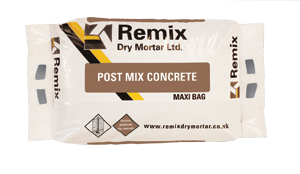

How to Build a Raised Sleeper Bed
DIY guide from Wood Green Timber
Raised beds are one of the easiest and most effective ways to smarten up your garden, grow your own veg, or add some low-maintenance planting. Whether you’re landscaping or just making a quick weekend project, building your own sleeper planter is simple — and solid.
Here’s how to get it done properly, using pressure-treated sleepers from Wood Green Timber.
What You’ll Need:
From Us:
-
Treated softwood sleepers (available in multiple sizes)
-
Timberlock structural screws or sleeper fixings
-
Weed membrane
-
Postmix (if fixing in ground)
-
Optional: gravel for drainage, decorative top capping, brackets
Tools:
-
Saw (hand saw or circular saw)
-
Cordless drill/impact driver
-
Level
-
Tape measure
-
Spade
-
Hammer or mallet
-
String line (optional for squaring off)
Step 1: Choose Your Sleeper Size
We stock softwood sleepers in a range of sizes and lengths — common ones include:
-
100x200mm
-
150x150mm
-
125x250mm
-
100x200mm Oak sleepers for a longer-lasting, premium finish (20–30 years!)
Decide how long, wide, and tall you want your planter to be. A single layer is fine for flowers or shallow roots, but go 2–3 sleepers high for veg beds or deeper soil.
Step 2: Prep the Area
-
Mark out the shape with pegs or a string line
-
Remove any turf and level the ground as best you can
-
Lay down weed membrane to help stop growth underneath
-
For better drainage, add a layer of gravel (optional)
Step 3: Lay the First Layer
-
Place your first layer of sleepers down and check for square and level
-
Trim any to size if needed — we don’t cut timber to length, but a saw will do the job easily
-
If fixing into the ground (for added stability), dig down slightly or concrete in corner posts using postmix
Step 4: Stack and Fix
-
Stack the next layer of sleepers on top, overlapping the joints like bricks if you’re using shorter lengths
-
Fix each layer to the one below using Timberlock screws, coach screws, or sleeper brackets
-
Drill pilot holes if using large screws to avoid splitting
-
Continue stacking until you reach your desired height
Tip: Use long structural screws at the corners and every 600–800mm along the run for a solid build
Step 5: Add Finishing Touches
-
Line the inside with weed membrane to protect the timber and retain soil
-
Optionally add a decking board capping for a neater look and a place to sit
-
Fill with compost, topsoil, and whatever you’re planting
Sleeper Bed Ideas
-
Straight-edged beds for vegetable growing
-
L-shaped or U-shaped layouts for decorative borders
-
Tiered beds on a slope
-
Corner planters with built-in bench seating
Need Materials?
We’ve got everything you need in stock:
-
Treated softwood sleepers in a range of sizes and lengths
-
Oak sleepers (longer lasting, premium look)
-
Sleeper fixings – Timberlock screws, brackets, coach bolts
-
Weed membrane, postmix, and optional capping materials
-
Delivery available across North London and Hertfordshire
Just bring your measurements and we’ll help you work it out.
Wood Green Timber — real timber, real advice, real people.
Featured Products
All Bog Categories
Search Our Blog
All Bog Categories
Search Our Blog


How to Build a Raised Sleeper Bed
DIY guide from Wood Green Timber
Raised beds are one of the easiest and most effective ways to smarten up your garden, grow your own veg, or add some low-maintenance planting. Whether you’re landscaping or just making a quick weekend project, building your own sleeper planter is simple — and solid.
Here’s how to get it done properly, using pressure-treated sleepers from Wood Green Timber.
What You’ll Need:
From Us:
-
Treated softwood sleepers (available in multiple sizes)
-
Timberlock structural screws or sleeper fixings
-
Weed membrane
-
Postmix (if fixing in ground)
-
Optional: gravel for drainage, decorative top capping, brackets
Tools:
-
Saw (hand saw or circular saw)
-
Cordless drill/impact driver
-
Level
-
Tape measure
-
Spade
-
Hammer or mallet
-
String line (optional for squaring off)
Step 1: Choose Your Sleeper Size
We stock softwood sleepers in a range of sizes and lengths — common ones include:
-
100x200mm
-
150x150mm
-
125x250mm
-
100x200mm Oak sleepers for a longer-lasting, premium finish (20–30 years!)
Decide how long, wide, and tall you want your planter to be. A single layer is fine for flowers or shallow roots, but go 2–3 sleepers high for veg beds or deeper soil.
Step 2: Prep the Area
-
Mark out the shape with pegs or a string line
-
Remove any turf and level the ground as best you can
-
Lay down weed membrane to help stop growth underneath
-
For better drainage, add a layer of gravel (optional)
Step 3: Lay the First Layer
-
Place your first layer of sleepers down and check for square and level
-
Trim any to size if needed — we don’t cut timber to length, but a saw will do the job easily
-
If fixing into the ground (for added stability), dig down slightly or concrete in corner posts using postmix
Step 4: Stack and Fix
-
Stack the next layer of sleepers on top, overlapping the joints like bricks if you’re using shorter lengths
-
Fix each layer to the one below using Timberlock screws, coach screws, or sleeper brackets
-
Drill pilot holes if using large screws to avoid splitting
-
Continue stacking until you reach your desired height
Tip: Use long structural screws at the corners and every 600–800mm along the run for a solid build
Step 5: Add Finishing Touches
-
Line the inside with weed membrane to protect the timber and retain soil
-
Optionally add a decking board capping for a neater look and a place to sit
-
Fill with compost, topsoil, and whatever you’re planting
Sleeper Bed Ideas
-
Straight-edged beds for vegetable growing
-
L-shaped or U-shaped layouts for decorative borders
-
Tiered beds on a slope
-
Corner planters with built-in bench seating
Need Materials?
We’ve got everything you need in stock:
-
Treated softwood sleepers in a range of sizes and lengths
-
Oak sleepers (longer lasting, premium look)
-
Sleeper fixings – Timberlock screws, brackets, coach bolts
-
Weed membrane, postmix, and optional capping materials
-
Delivery available across North London and Hertfordshire
Just bring your measurements and we’ll help you work it out.
Wood Green Timber — real timber, real advice, real people.







